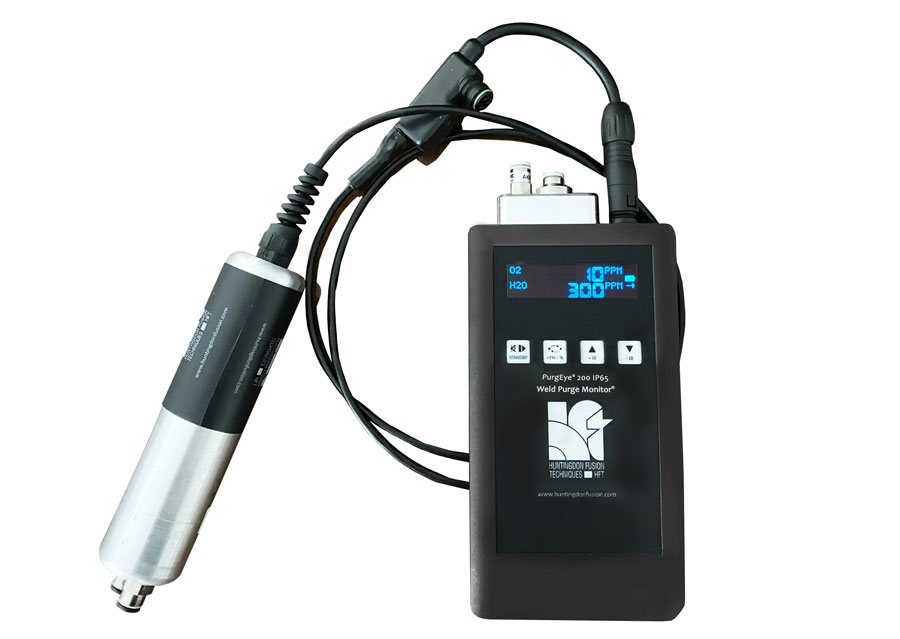
Measurement of the Dew Point for Critical welds has never been easier than with the revolutionary HFT® PurgeNet™ Dew Point Purging Gas Moisture Sensor™.
Here are some of our Frequently Asked Questions.
1.0 What is ‘Dew”?
Dew is expressed as drops of liquid water that condense from the atmosphere and onto any solid surface like metal.
2.0 What is ‘the Dew Point’?
The dew point is the temperature in ºC or ºF at which air is saturated with water vapour (also referred to as humidity). Below the dew point, water will begin to condense on solid surfaces in the welding environment.
3.0 How does water moisture affect the quality of the weld joint?
Under arc conditions, water is broken down into hydrogen and oxygen in atomic form which, when present in weld metal, cause porosity and are known to create cracking in the weld joint.
4.0 Why should I use a Dew Point Purging Gas Moisture Sensor™?
Using the PurgeNet™ Dew Point Purging Gas Moisture Sensor™ while welding is the easiest method for indicating when water will condense on solid surfaces in the welding zone. Water can form as moisture on metal surfaces while welding and it is important to be able to measure ‘Dew Point” while welding lengthy critical joints as conditions can change during the welding process.
5.0 How does the Dew Point Purging Gas Moisture Sensor™ give readings?
The PurgEye® Dew Point Sensor accessory has been designed to integrate with most of the Argweld® Weld Purge Monitors® via the PurgeNet™ lead that is supplied with them, thereby giving values and water present on the same screen. In this way, the user is not forced into the purchase of an expensive, separate Dew Point Monitor that will give its reading elsewhere.

6.0 Which Weld Purge Monitors® are compatible with the Dew Point Purging Gas Moisture Sensor™?
The PurgeNet™ Dew Point Purging Gas Moisture Sensor™ is compatible with the PurgEye® 200, 500 Desk, 600, 1000 Remote and 1500 Site.